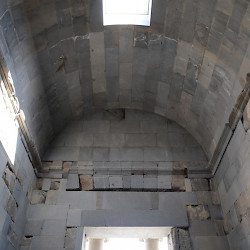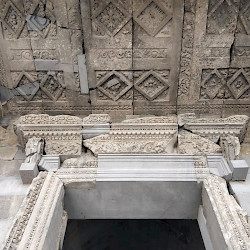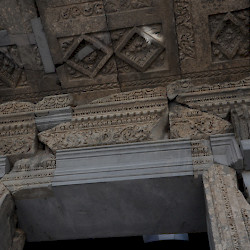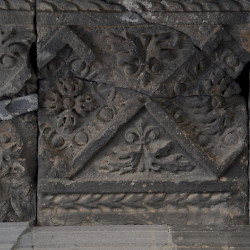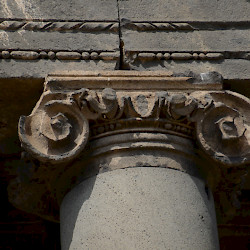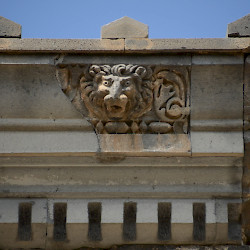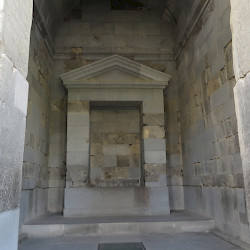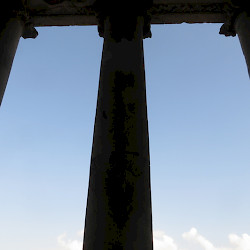Garni, "Temple"
Q684072Gorneae: fortress in eastern Armenia, modern Garni.
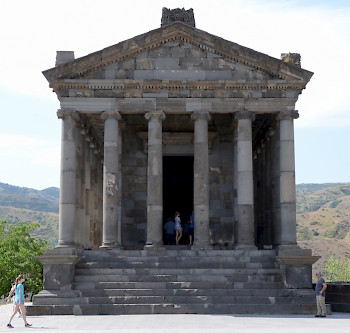
The most famous monument in Garni looks like a Roman temple. It is easy to see why it has been interpreted as a temple, and the discovery of three fragments that may have been part of a tauroctony relief (the typical relief in a mithraeum, a sanctuary dedicated to the solar god Mithras), offers a clue about the nature of the god who was venerated in Garni. The fact that a Greek inscription mentioning the sun was found as well, may confirm this interpretation.
However, there are some problems with this interpretation: there is no reason to assume that the pieces of sculpture, which were found in the canyon, belong to the temple. Even if they belong to a tauroctony, these reliefs were usually in underground temples resembling caves, not in "normal" temples like the one in Garni. Another point is that the inscription refers to the building of a fortress, not to the construction of a temple; the word Helios, "Sun", appears to be a royal title and does not refer to a deity.
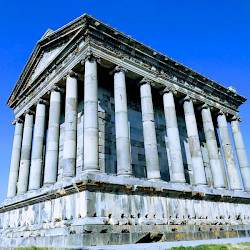 Garni, Roman-style monument |
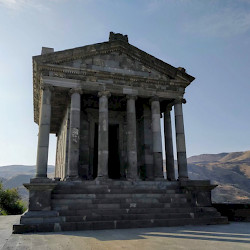 Garni, Roman-style monument |
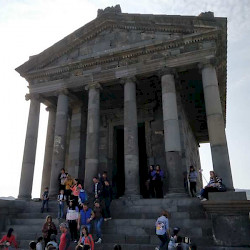 Garni, Roman-style monument |
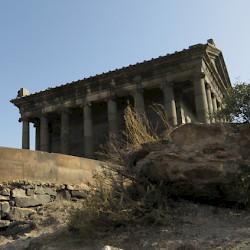 Garni, Roman-style monument |
An alternative interpretation is that the building is in fact a mausoleum of an Armenian king named Sohaemus, who died in c.175 CE. If it is indeed not a temple but a tomb, this would explain why this monument was allowed to remain when the Christians built a church next to it.
However this may be, this is an interesting monument, because it is made out of basalt instead of marble, and because the capitals have Ionic capitals and Attic pedestals. The use of iron bars to join the stones is unusual in Armenia.
The temple/mausoleum was beautifully restored in 1968-1976.
